


Blood clots can be concerning, but there are effective treatments available to help manage them. These include:
It's important to understand that each person's situation is unique, which is why personalized healthcare plans are essential, especially for seniors. Collaborating with healthcare professionals can make a significant difference in managing blood clot risks and treatment options.
In addition to these treatments, consider how these options can fit into your life. Have you discussed your concerns with your healthcare provider? They can help guide you through the process, ensuring that you receive the best possible care tailored to your needs. Remember, you are not alone in this journey; support is available.
Ultimately, the goal is to prevent complications and effectively manage symptoms. By working together with your healthcare team, you can take proactive steps towards better health. It's never too late to seek help and explore your options for a healthier future.
Understanding blood clots is crucial, especially for seniors who may face heightened risks due to various health factors. These formations play an essential role in healing, yet their improper development can lead to serious conditions such as deep vein thrombosis and pulmonary embolism. This article offers a comprehensive guide on the treatment options available for blood clots, empowering you to navigate the complexities of care and prevention.
What strategies can seniors adopt to effectively manage their cardiovascular health and minimize the risks associated with thrombi? Together, we can explore these important questions and find ways to support your health journey.
Thrombi are semi-solid or gel-like formations that develop in the circulatory system, primarily made up of platelets, proteins, and red cells. They play a vital role in helping the body stop bleeding when injuries occur. However, while they are essential for recovery, improper formation can lead to significant health risks, such as deep vein thrombosis (DVT) or pulmonary embolism (PE). Understanding the dual nature of thrombi is particularly important for older adults, who may face a higher risk of complications due to factors like immobility, chronic conditions, and age-related changes in circulation.
At Amavita Heart and Vascular Health, we are dedicated to providing targeted cardiovascular care designed specifically for high-risk patients, including those with diabetes, hypertension, or a family history of heart disease. Our advanced imaging capabilities and comprehensive evaluations ensure that seniors receive effective treatment monitoring and personalized approaches to manage their cardiovascular health. We address common heart concerns with advanced, minimally invasive treatments, always prioritizing your well-being.
If you or a loved one have concerns about thrombi or cardiovascular health, we encourage you to reach out to us. Our is here to listen, support, and guide you through your health journey, ensuring you feel valued and cared for every step of the way.
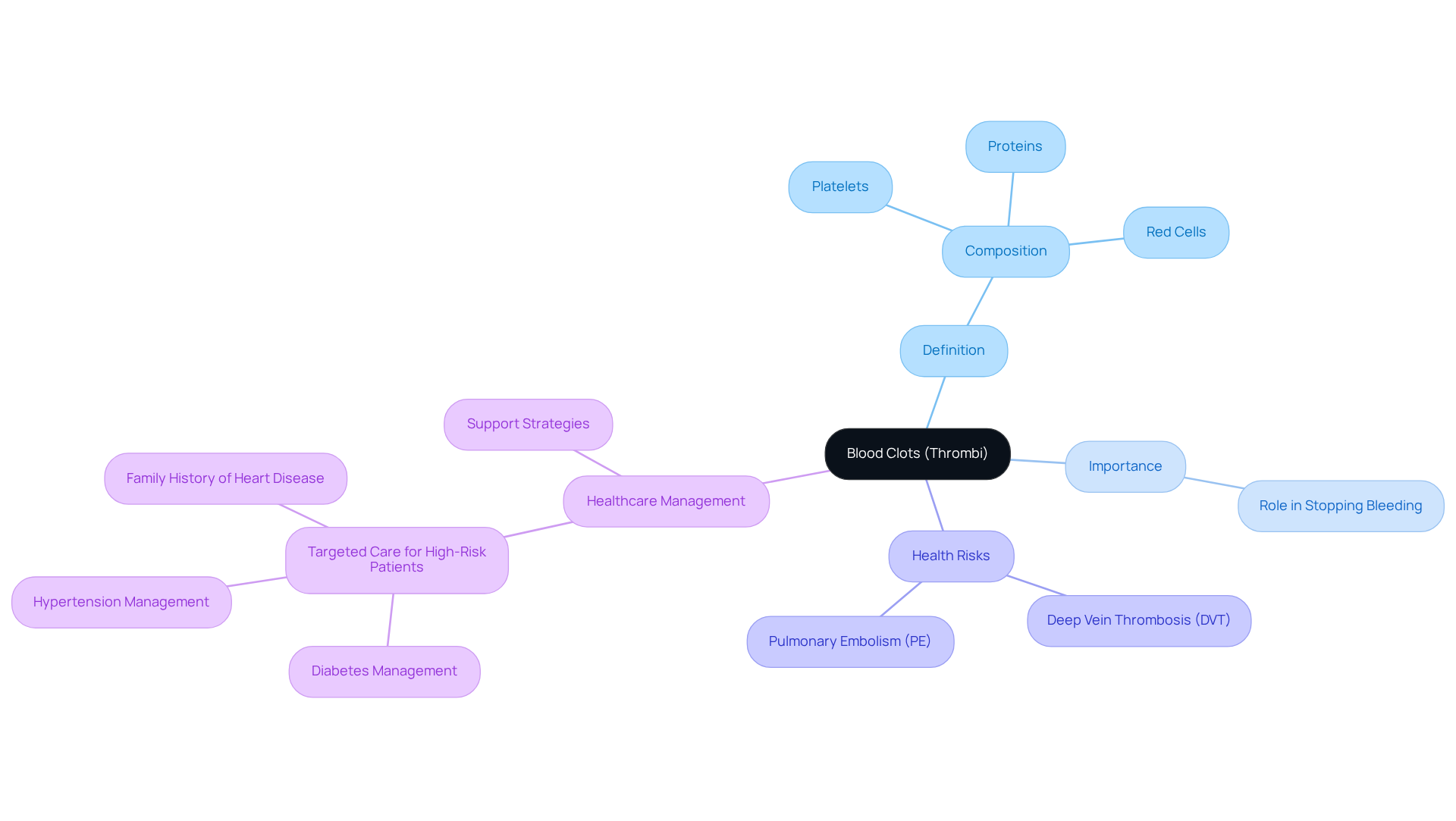
Blood clots can form due to various factors, and understanding these can help you and your caregivers take proactive steps to stay healthy.
Recognizing these causes is essential, as it empowers you and your caregivers to identify situations that may require preventive measures. Remember, you are not alone in this journey, and is a strong and positive step towards better health.
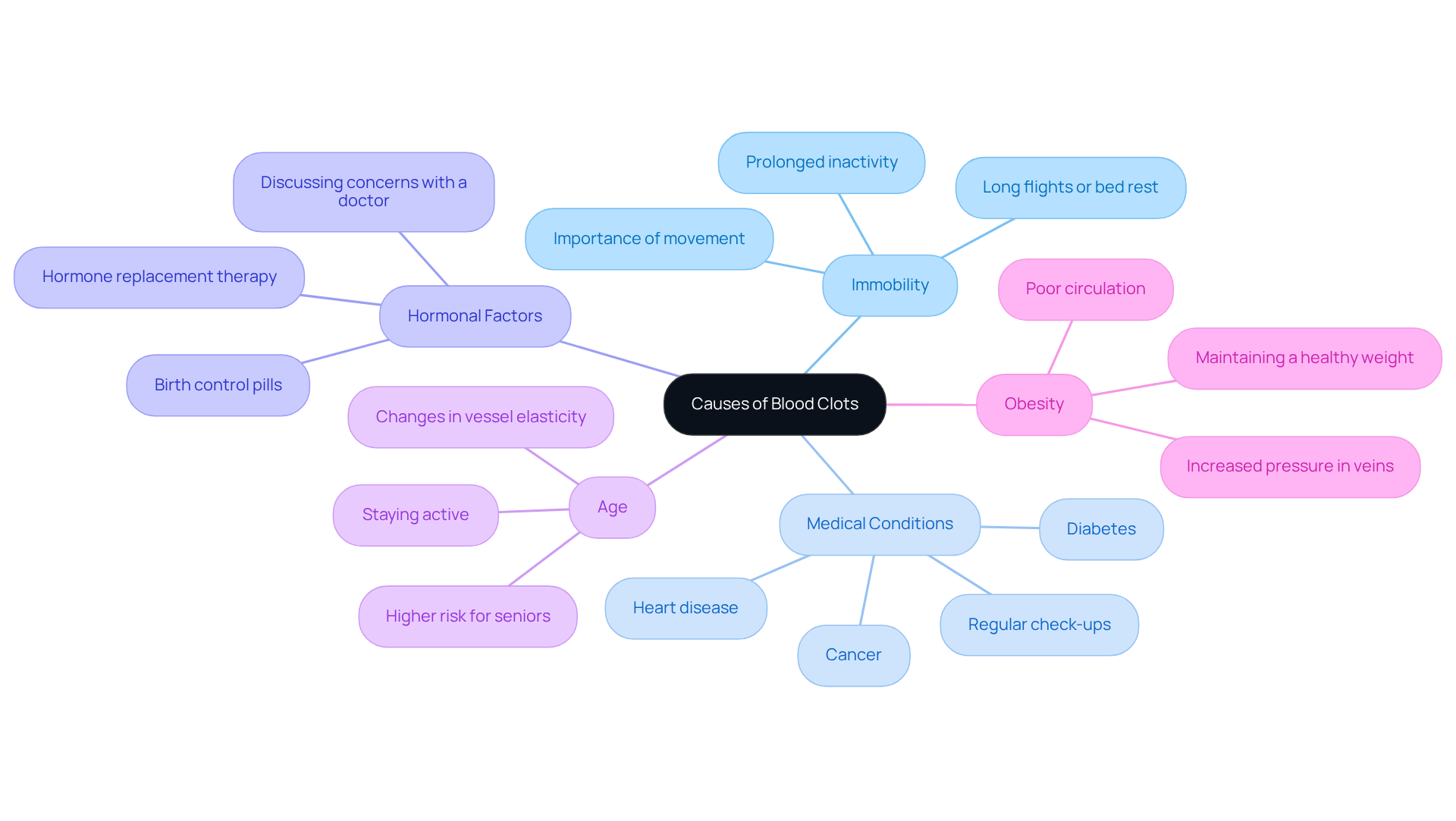
Signs of circulatory blockages can vary depending on their location, and it's important to be aware of the signs. Have you noticed any changes in your body? Here are some common symptoms to keep an eye on:
If you or a loved one is a senior, particularly those with diabetes, hypertension, or a family history of heart disease, it’s crucial to seek immediate medical attention if any of these symptoms arise. Remember, early detection is key. At Amavita Heart and Vascular Health, we provide advanced imaging and comprehensive evaluations to ensure that high-risk patients receive the they need. You are not alone in this journey; we are here to support you every step of the way.
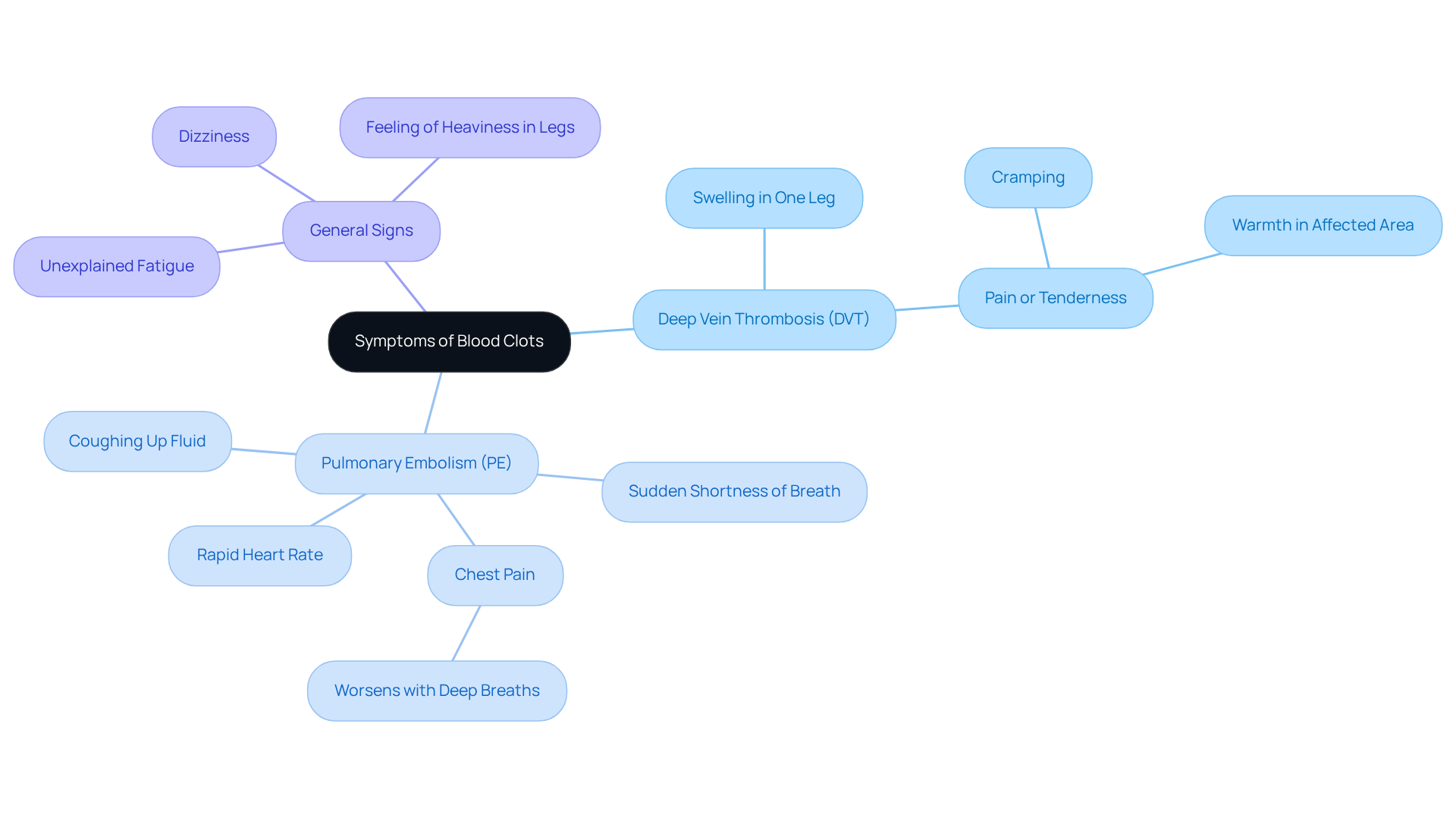
Treatment for blood clots can feel overwhelming, but can provide some peace of mind. Here are some common approaches that may be recommended:
It's essential for elders to collaborate closely with their healthcare professionals to establish the most suitable treatment plan tailored to their individual health conditions and needs. Remember, you are not alone in this journey; support is available, and together, you can find the best path forward.
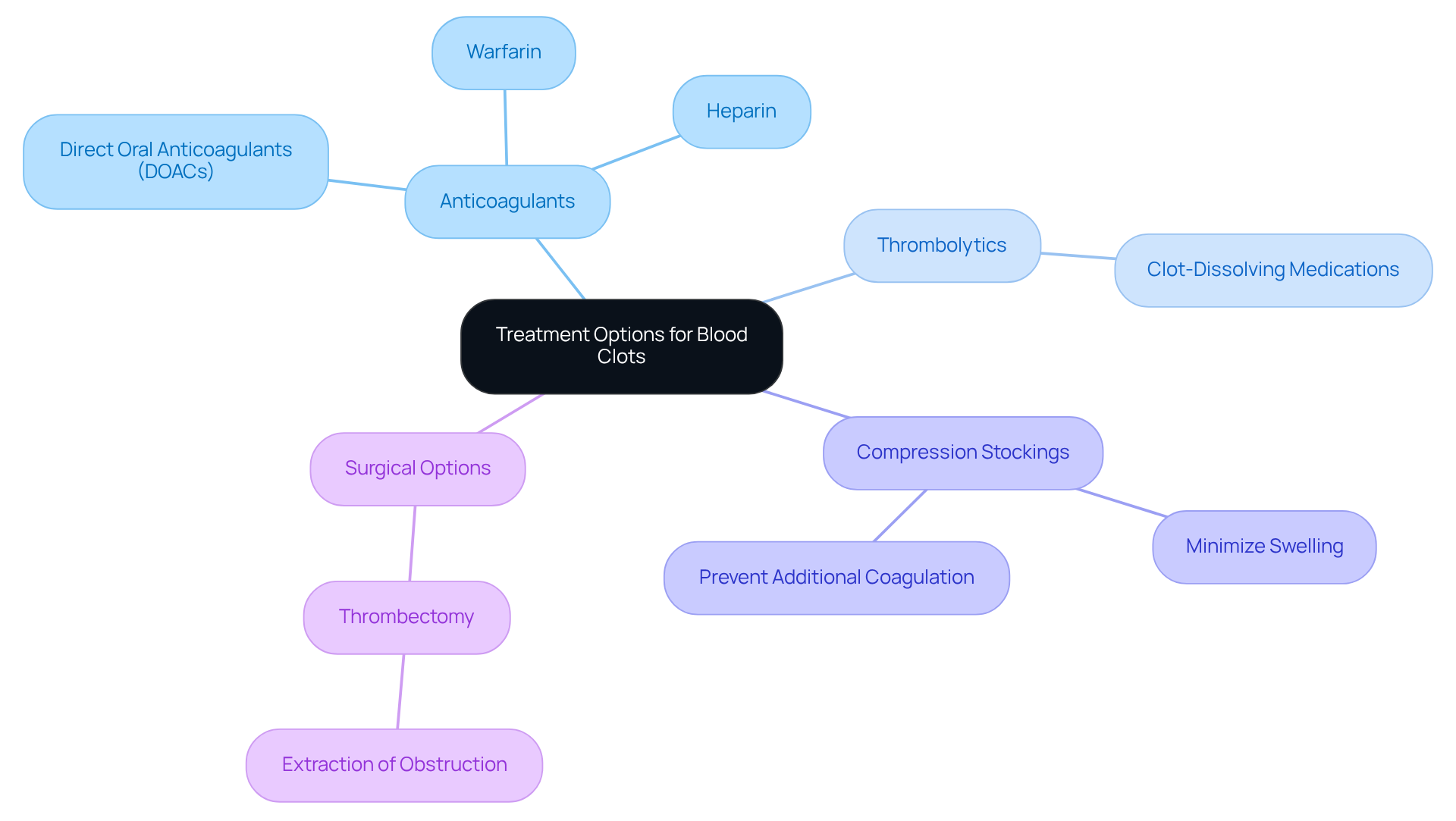
To help reduce the risk of blood clots, it’s important for seniors to consider a few .
A healthy diet is another key factor.
By embracing these preventive measures, seniors can greatly lower their risk of developing blood clots and enhance their overall well-being. Remember, taking these steps is a way to care for yourself, and you don’t have to do it alone—support is always available.
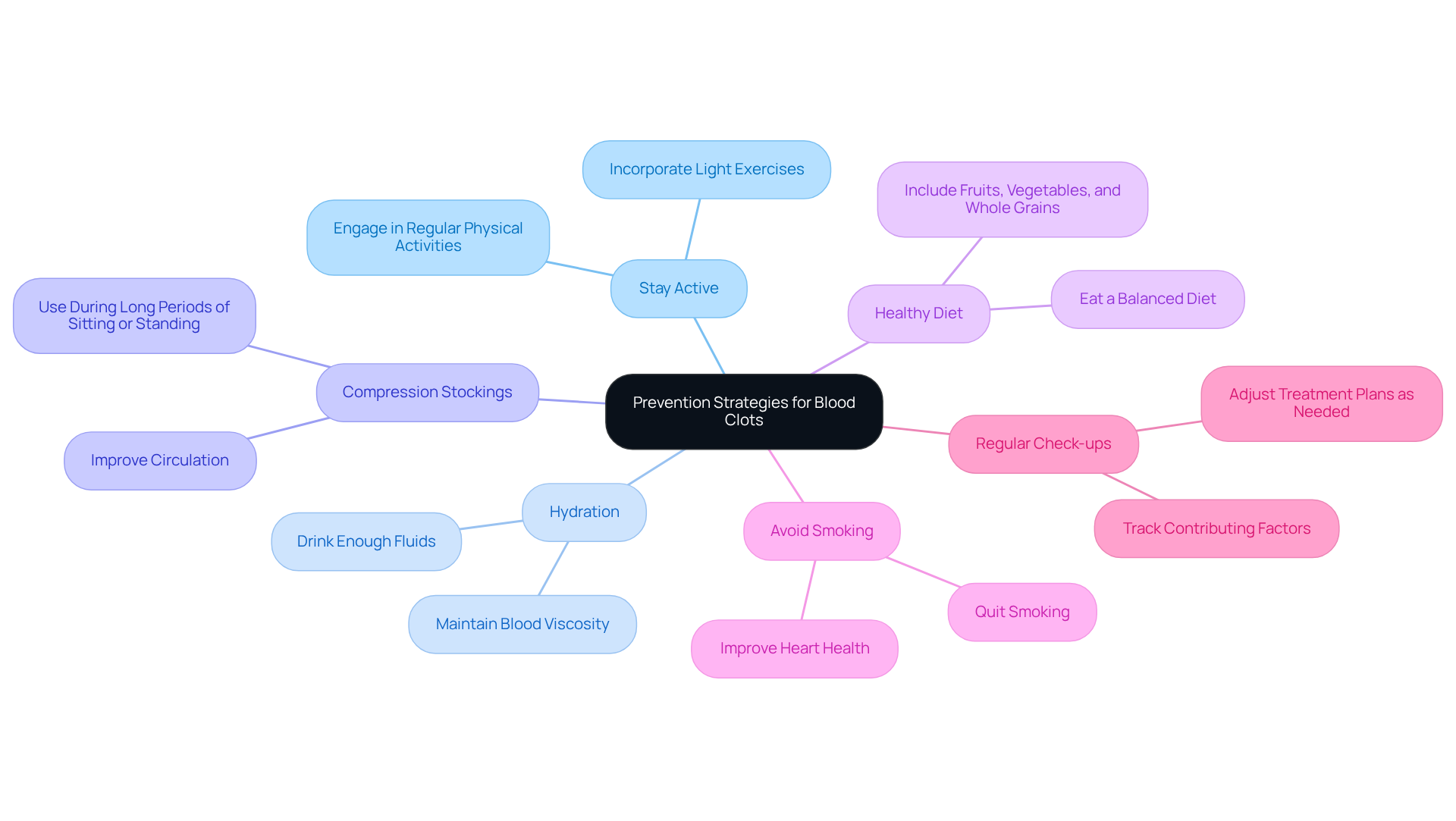
Understanding blood clots is crucial, especially for seniors who may face heightened risks due to various health factors. This guide has outlined the dual nature of thrombi, emphasizing their importance in healing while also highlighting the potential dangers they pose when improperly formed. By recognizing the risks and symptoms associated with blood clots, older adults can take proactive steps to safeguard their health.
Key insights include identifying causes such as:
These factors can contribute to clot formation. Treatment options range from:
This ensures that seniors have access to a variety of effective management strategies. Furthermore, implementing preventive measures like:
Can significantly reduce the risk of developing blood clots.
Ultimately, awareness and education are vital in addressing the challenges posed by blood clots. Seniors and their caregivers are encouraged to engage with healthcare professionals, seeking support and guidance tailored to individual health needs. By taking an active role in managing cardiovascular health, seniors can enhance their quality of life and mitigate the risks associated with blood clots.
What are blood clots and why are they important?
Blood clots, or thrombi, are semi-solid formations in the circulatory system made up of platelets, proteins, and red cells. They are crucial for stopping bleeding during injuries but can pose health risks like deep vein thrombosis (DVT) or pulmonary embolism (PE) if formed improperly.
Who is at a higher risk for complications related to blood clots?
Older adults are at a higher risk for complications due to factors such as immobility, chronic conditions, and age-related changes in circulation.
What services does Amavita Heart and Vascular Health provide for high-risk patients?
Amavita Heart and Vascular Health offers targeted cardiovascular care for high-risk patients, including those with diabetes, hypertension, or a family history of heart disease, along with advanced imaging capabilities and comprehensive evaluations for effective treatment monitoring.
What factors can lead to the formation of blood clots?
Blood clots can form due to several factors, including: - Immobility: Prolonged inactivity can slow blood flow. - Medical Conditions: Conditions like cancer, heart disease, and diabetes increase risk. - Hormonal Factors: Changes from medications like birth control pills can enhance clotting tendencies. - Age: Aging affects vessel elasticity and circulation, raising risk for seniors. - Obesity: Excess weight can hinder circulation and increase vein pressure.
How can individuals reduce their risk of blood clots?
Individuals can reduce their risk by staying active, managing medical conditions through regular check-ups, discussing hormonal medication concerns with their doctor, and maintaining a healthy weight.
What should someone do if they have concerns about blood clots or cardiovascular health?
If you or a loved one have concerns about blood clots or cardiovascular health, it is recommended to reach out to healthcare providers for support and guidance throughout your health journey.